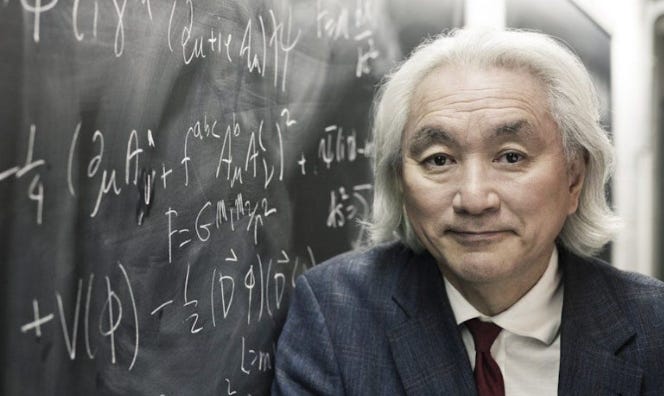Are we the listeners or the echo?
On music, memory, and the mysterious way sound calls us home, across time, place, and bloodline.
Sometimes, music from distant lands speaks to something deep inside - beyond culture, beyond heritage. When I first heard this blend of traditional Bashkir and Russian sounds, it stirred a part of me I didn’t expect, like an echo buried in my DNA. Ay Yola is most famous through their 2025 song Homay, which went viral internationally, notably in the Turkic states of Kazakhstan, Turkey, Uzbekistan, Kyrgyzstan, and Turkmenistan. Whilst my origins stem from Greece, something about the song gripped me; the blend of traditional throat singing and contemporary indie electronic sounds are mesmerising.
Homay is a living testament to music’s power to dissolve the boundaries of time and space. Just as music can stir deep, inexplicable connections to distant places and epochs, Homay bridges ancient Bashkir mythology and modern global soundscapes, inviting listeners of all backgrounds into a shared emotional vortex. It is sung in Bashkir and draws its narrative from the epic “Ural-Batyr,” centering on the mythical Huma (Homay) bird, a symbol of wisdom, light, and sacred knowledge in Turkic folklore. The song not only honours this legendary figure but also draws a direct line between ancient myth and the contemporary experience of Bashkir women, framing them as bearers of ancestral wisdom.
Homay is a masterclass in cultural fusion. It blends traditional Bashkir instruments such as the kurai (a reed flute), dombra (a long-necked lute), and kobyz (a bowed string instrument) with contemporary electronic production, including synthwave and trap-inspired beats. This juxtaposition creates a soundscape that feels both timeless and immediate, echoing the sensation of existing in multiple realities at once.
Despite being sung in Bashkir - a language unfamiliar to many listeners - the song has resonated internationally, topping charts from Kazakhstan to Germany, and going viral on platforms like TikTok and Shazam. The universality of its melody, rhythm, and mythic themes allows it to transcend linguistic and cultural barriers, much like the way certain melodies can evoke ancestral memory or a sense of home in listeners far removed from the song’s origins. This thematic layering - myth, ancestry, and modern identity - begs the question: how can music connect us to places and eras far removed from our lived experience, stirring something primal and universal within us?
Does music tap into our DNA, or does it allow us to exist in parallel realities beyond our lived dimension? While science is still unraveling the mysteries of music’s impact on memory and identity, Homay shows that certain sounds and stories can resonate across time, geography, and culture, awakening emotions and connections that defy rational explanation.
Some researchers propose that musical sensitivity is tied to gene-culture coevolution. For instance, the AVPR1A gene, linked to auditory processing and social bonding, may influence why certain rhythms or modes feel innate. Yet this theory struggles to explain why someone with no Caucasus ancestry might feel a primal connection to its music.
Carl Jung’s concept of a shared psychic reservoir - a storehouse of archetypes and symbols - offers another lens. Music might tap into this universal library, allowing us to access experiences beyond our personal or ethnic history.
Theoretical physicist Michio Kaku posits that vibrations could exist in multiple dimensions. Music’s mathematical structure (frequencies, ratios) might resonate with these hidden layers, momentarily syncing us with alternate timelines or spaces.
What is the universe?
The universe is a symphony of vibrating strings... we are nothing but melodies. We are nothing but cosmic music played out on vibrating strings and membranes - Michio Kaku
Indigenous cultures, from Aboriginal Australians to the Sami of Scandinavia, view songlines and joiks as conduits to interact with ancestors or parallel realms. Modern science may dismiss this as myth, but neuroimaging shows that music activates brain regions associated with spiritual experiences.
Suspended between worlds, I have always carried the duality of my Greek heritage and Australian upbringing - the olive groves of ancestral memory set against the eucalyptus-scented suburbs of Melbourne of my youth. Yet nothing could have prepared me for the profound impact of hearing the duduk, that ancient Armenian reed instrument, for the first time. My introduction came through Peter Gabriel’s Passion: The Last Temptation of Christ soundtrack, where the opening track, The Feeling Begins, swept me away to biblical Judea and Galilee. In those moments, I could taste the desert dust, inhale the briny air of the Dead Sea, and feel the relentless sun searing my skin. Gabriel’s collaboration with Armenian musicians Vatche Housepian and Antranik Askarian, particularly their haunting rendition of The Wind Subsides, did more than evoke distant lands - it transported me beyond the boundaries of time and place, into another dimension entirely.
The duduk sound was a hook in my soul: a mournful, woody resonance that felt at once foreign and deeply familiar. How could melodies from the remote Central Caucasus, a region I’d never visited and had no tangible link to, stir such visceral longing? This experience raises a haunting question: Does music act as a key to hidden chambers within our DNA, or does it connect us to realities beyond our three-dimensional existence? When I hear the duduk, am I touching a memory that belongs not to me, but to humanity?
The sound of the duduk really does transcend borders.
This is incredible. So many people from completely different continents say that duduk resonates with their souls... I am from Poland, duduk resonates with my soul also. We all are from ONE source.. one soul? - @Wierka6
I am from Perú and I love my country’s music but this sound is hauntingly beautiful. It resonates in my soul. I am nearly in tears - @cristinamorenolamin3217
Music has an uncanny ability to collapse time - it acts as a temporal bridge. A single phrase can evoke epochs: such as the polyphonic singing of Georgia’s Svaneti region, with its overlapping harmonies, mirrors the same vocal patterns found in 3,000-year-old Mesopotamian hymns. When we hear these sounds, we’re not just listening to notes - we’re hearing the acoustic footprint of human civilisations that shaped our collective psyche.
Studies suggest that auditory memories may persist across generations. For example, trauma survivors’ descendants often show heightened emotional responses to specific sound frequencies linked to their ancestors’ experiences. Could musical preferences be a form of epigenetic inheritance?
Music also defies spatial boundaries. The Caucasus - a mountainous crossroads between Europe and Asia - has produced sounds that feel geographically encoded.
The region’s jagged terrain and echo-prone valleys gave birth to soaring vocal styles (like Azerbaijani mugham) that mimic the landscape’s mountains. These sounds seem to carry the land itself, offering listeners a psychic map of cliffs and glaciers.
Ethnomusicologists note that drone-based melodies such as the Armenian shvi flute appear in disparate cultures, from Scottish bagpipes to Tibetan throat singing. These parallels hint at a shared human sound vocabulary that transcends geography.
And thus, we return to Ay Yola - introduced to me via a viral reel on Instagram. The song was a live performance by the group along with Russian artist and Eurovision winner, Dima Bilan. The live performance was enchanting. Bewitching. And most of all, tapping into a quantum field where I felt connected to every note; every beat. By blending ancient folklore with modern electronic music, Ay Yola has created more than a song; they’ve crafted a portal - a vortex of time and space - that invites each listener to explore the echoes of their own history, real or imagined, and to feel at home in a world of shifting borders and shared myths.
Perhaps DNA and multidimensionality aren’t mutually exclusive explanations. Music may be both a remnant of our biological past and a bridge to realities where time and space are fluid. For those of us straddling cultures, it offers a paradox: the comfort of belonging nowhere and everywhere at once.
As the duduk’s lament fades, I’m left wondering - are we the listeners, or are we the echo?
Have you ever heard an instrument, a song, or a melody that made you feel connected to something or somewhere far removed from your material reality? Feel free to leave a comment below - or just hit reply. I’d love to hear!





